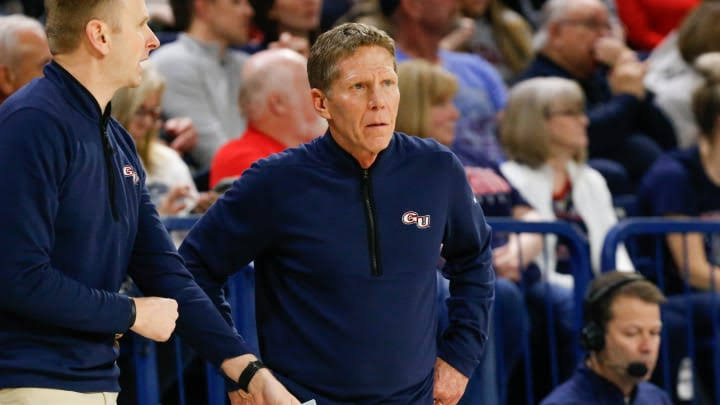In an era where college basketball rosters seem to change overnight, the Gonzaga Bulldogs are proving that stability and strategic planning still matter. As programs across the country scramble to fill holes left by transfers and early NBA departures, Gonzaga is navigating the ever-evolving transfer portal with confidence—not chaos.
Under the leadership of head coach Mark Few, the Bulldogs have never been a program known for knee-jerk reactions or desperation. That trend continues this offseason, as the Zags approach the portal not as a lifeline, but as an opportunity to enhance a foundation already built on strong recruiting, player development, and culture.
While some high-profile programs have taken a “quantity over quality” approach, Gonzaga has stayed true to its identity—targeting specific needs rather than overhauling the entire roster. This year, that has meant focusing on adding size, athleticism, and veteran presence in the frontcourt, while ensuring that incoming players complement the existing core.
Gonzaga’s track record in the portal speaks for itself. Players like Rasir Bolton, Andrew Nembhard, and Ryan Woolridge all transferred into the program and became key contributors, both on the court and in the locker room. Each was a calculated addition, brought in not only for talent but for fit.
This spring, Gonzaga is again being intentional. With players graduating or moving on, including the departure of anchor forward Anton Watson, the staff has targeted skilled, experienced players who can slide into the system seamlessly. The goal isn’t to chase headlines—it’s to build a team that can compete deep into March.
Another reason Gonzaga doesn’t panic in the portal? Player development. Few and his staff have consistently turned under-the-radar recruits and redshirt players into stars. With rising talents already in the pipeline—such as Jun Seok Yeo and Dusty Stromer—the Zags are focused on complementing internal growth rather than replacing it.
There’s also a strong belief in the culture Gonzaga has built. The coaching staff looks beyond stats when evaluating portal prospects, placing a high premium on character, work ethic, and team-first mentality. Players are expected to buy in, not just show up.
“We’re not looking to stack names—we’re building a team,” assistant coach Brian Michaelson said in a recent interview. “We want guys who want to be here, who understand what it means to be a Zag.”
This measured approach has earned Gonzaga respect nationally. While other programs face offseason drama and roster turnover, the Bulldogs maintain consistency and purpose. It’s why they’ve remained a top-tier program despite the shifting landscape of college basketball.
The transfer portal isn’t going away, and Gonzaga knows that. But instead of letting it dictate their future, the Zags are using it as a tool—one that, when wielded wisely, can elevate a great program into a national contender once again.
In the chaos of the modern college game, Gonzaga’s calm, calculated moves are a reminder: confidence and culture still win.
